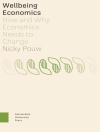Gender in Communication: A Critical Introduction embraces the full range of diverse gender identities and expressions to explore how gender influences communication, as well as how communication shapes our concepts of gender for the individual and for society at large. Authors Catherine Helen Palczewski, Danielle D. Mc Geough, and Victoria Pruin De Francisco equip readers with the critical analysis tools to form their own conclusions about the ever changing processes of gender in communication. This comprehensive gender communication book is the first to extensively address the roles of religion, the gendered body, single-sex education, an institutional analysis of gender construction, social construction theory, and more. The Fourth Edition has streamlined the text to make it more accessible to students without sacrificing the sophistication of the book′s trademark intersectional approach.
Tabela de Conteúdo
PART I: Foundations
Chapter 1 Developing a Critical Gender/Sex Lens
Chapter 2 Theories of Gender/Sex
Chapter 3 Gendered/Sexed Voices
Chapter 4 Gendered/Sexed Bodies
Chapter 5 Gendered/Sexed Language
Part II: Institutions
Chapter 6 An Introduction to Gender in Social Institutions
Chapter 7 Families
Chapter 8 Education
Chapter 9 Work
Chapter 10 Religion
Chapter 11 Media
Chapter 12 One Last Look Through a Critical Gendered Lens
References
Index
About the Authors
Sobre o autor
Victoria Pruin De Francisco, Ph D, is an emeritus professor in the Communication & Media Department and affiliate faculty in women’s and gender studies at the University of Northern Iowa; studied and taught courses in gender, intercultural, and interpersonal communication; served as director of the Women’s and Gender Studies Program; coordinated the National Coalition Building Institute, a university-wide diversity inclusion program; and has received the following awards: Iowa Regents Award for Faculty Excellence, the UNI Outstanding Graduate Faculty Teaching Award, and the Iowa American Association of University Women Distinguished Faculty Award. Victoria is married and has stepchildren and grandchildren who call her Nana and remind her every day why she wrote this book.












